Berman is a collaborator and a co-creator at heart, and draws people into her fold to make a tangible difference. Projects for which Berman has been at the helm include Phumani Paper, a national skills development and poverty alleviation initiative, and Paper Prayers, which launched in the 90s as a creative response to the HIV/AIDS epidemic and has seen many iterations since. The pandemic-born Lockdown Collection raised over R3.5 million for over 500 vulnerable artist grants and student burseries.
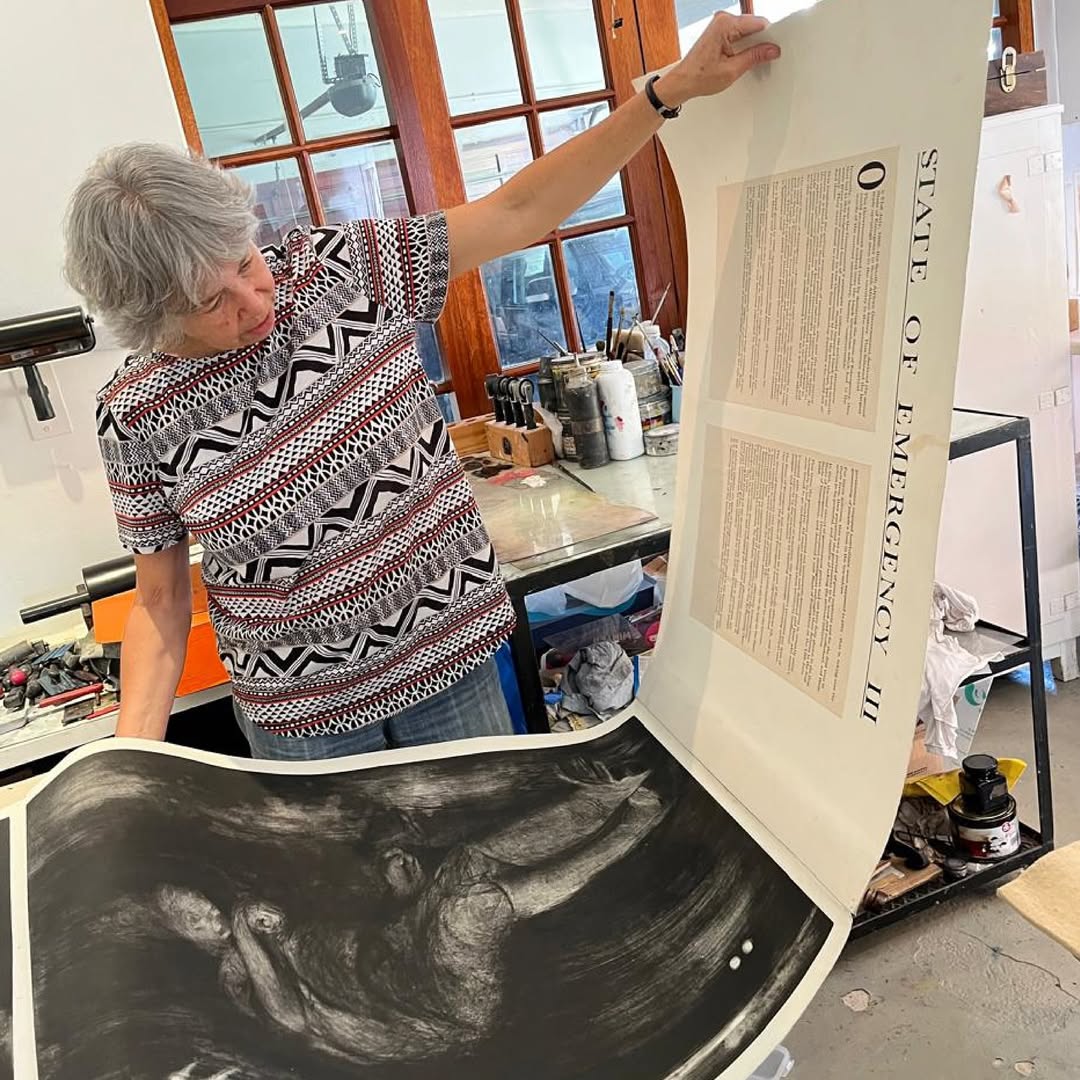
In her personal capacity, Berman's printmaking work hangs in prestigious collections at the Museum of Modern Art in New York and The Smithsonian in Washington. In fact, it's only in the making of her own artwork that Berman works alone – which is why her first solo in 15 years at UJ Art Gallery came as a surprise to so many of her peers and admirers.
"It felt like a revelation to pull work out of my drawers that I have long forgotten about." – Kim Berman
Fire is both a literal and metaphorical thread running through Berman’s life and work. In 2003, a devastating fire destroyed the original APS studio in Newtown, tragically claiming the life of co-founder Xaba. Later, a studio fire consumed precious prints and materials – making Berman no stranger to the act of rebuilding. "Fire destroys. It also renews the earth," Berman says. This elemental force embodies both the fragility and the fierce strength that define her practice and her spirit.
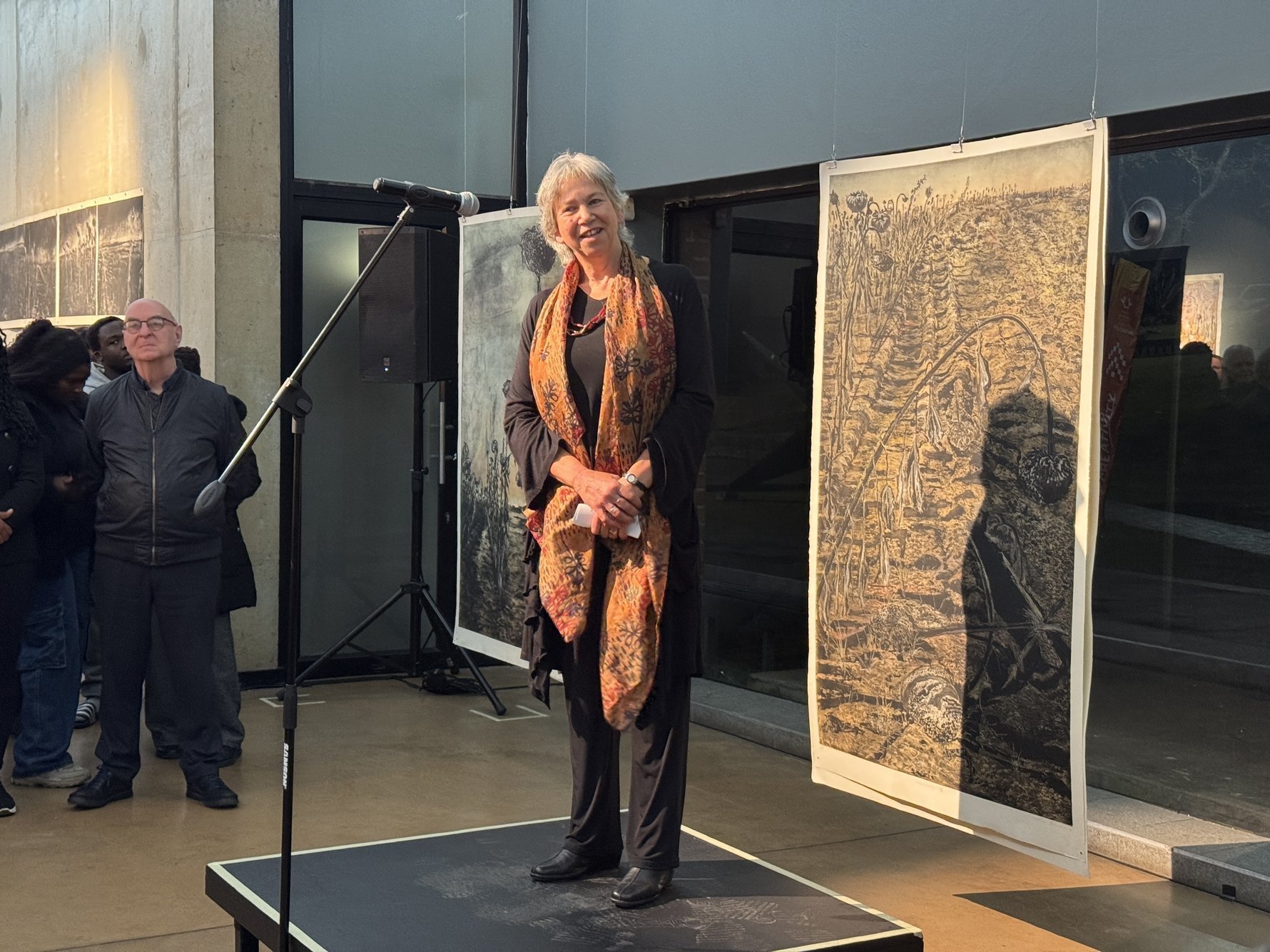
Berman's solo, Remembering and Forgetting: Landscapes in Dialogue, marks a pivotal moment as she steps out of her lecturing capacity and into a brave new world. We took the opportunity to quiz her about her illustrious career, deeply held belief in the transformative power of art, enduring love for Joburg – and what's next.
We’ve rarely seen the UJ Art Gallery so packed as it was for your exhibition opening. It speaks to your quiet but mighty impact on the South African art world. How have you experienced presenting your first solo in 15 years?
Having a solo show was both terrifying and exhilarating. I was quite scared to show my work after such a long time, and I suppose I lost my nerve as a visual artist. It has felt somehow more meaningful (and less exposing) to use my time as an educator and leader to promote the extraordinary talent of so many emerging artists who are in my world at UJ and APS. The exhibition opening was quite overwhelming, and the speech of my Dean, Federico Freschi, was remarkable and reaffirming. I am still trying to take it in, but I felt an enormous sense of privilege and gratitude at the opening.
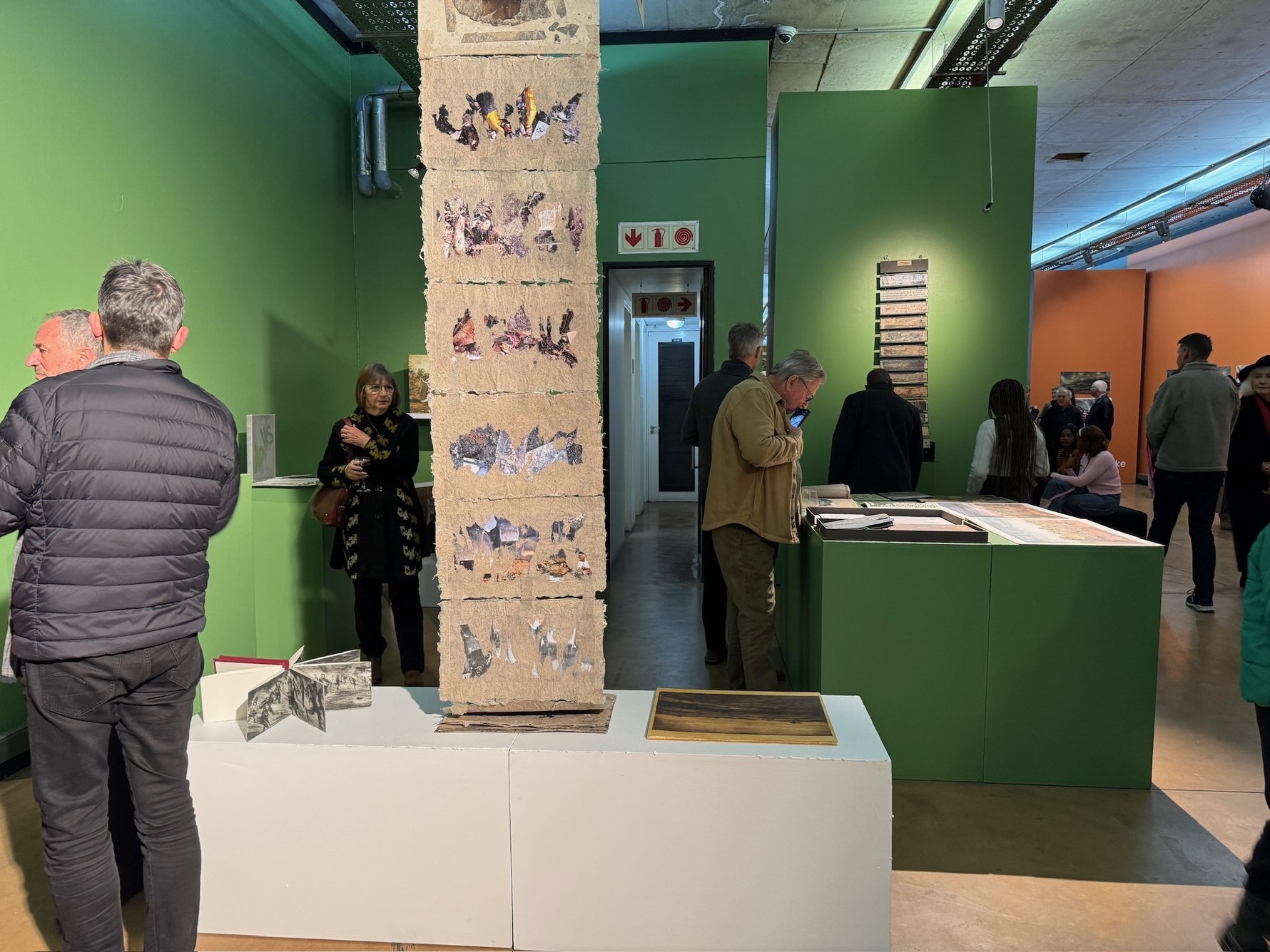
How does one begin to choose works for a show of this magnitude, spanning decades of your practice?
It felt like a revelation to pull work out of my drawers that I had long forgotten about. I found so many prints that I had not looked at for decades. When I took folders and folders to the gallery, the curating team said this was far too much for the available space. I would estimate they helped me edit out more than half of the older work. But some of the work not included in the exhibition is in the online and printed catalogue, which is the very first documented record of my body of work.
Dineke Orton, the curator at UJ Art Gallery, had the wonderful idea to include a timeline of my career, and we chose significant colours for each of the themes. She had the freedom to paint the gallery boldly, as it will be closing for the upcoming months while the roof is repaired. A sixth theme in maroon-red was added after my study fire called Fire – Revisited, which became a very meaningful installation.
"I’m an educator because I strongly believe we can facilitate students to believe they have a voice in creating an alternative future." – Kim Berman
Fire has been an enduring presence in your life and work, both literally and figuratively. What has this elemental force taught you?
Fire has been an elemental force in my life and work (a wonderful term, thank you). It activates my landscapes to come alive. Except for the very dark emergency work from the 1980s, fire and smoke have somehow brought in the agency, energy, and light. In the damage and destruction, there is continual and cyclical renewal, which we cannot always leave to nature.
I’m an educator because I strongly believe we can facilitate students to believe they have a voice in creating an alternative future. When the fire burnt my study, our dear friend Tamar said to me, "Kim, you have to stop with fire, you are summoning the fire spirits!" Perhaps I am, but I hope they will be confined to my work going forward. I strongly believe in the power of renewal… and, in the very damaged and corrupted world around us, an 'elemental force' is needed to reset our course on a kinder path.
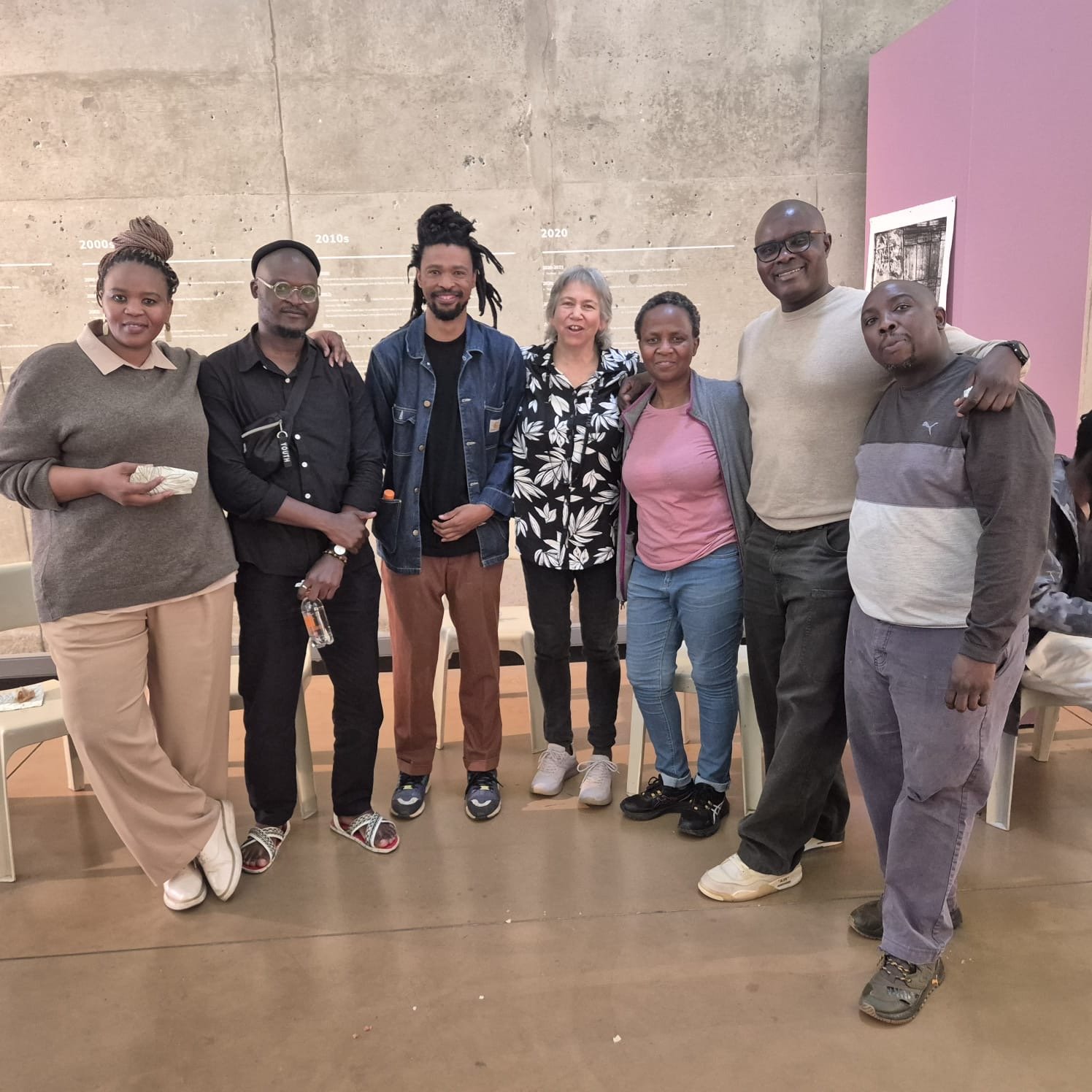
You are one of the co-founders of Artist Proof Studio – a magnificently successful initiative that has equipped 300 artists and counting since its start until 2025. We hope you are proud – and heartened – by this legacy. But take us back to the beginning. What was the impetus? And how did you start?
I co-founded Artist Proof Studio with the late Nhlanhla Xaba in 1991, who lost his life in the fire that burnt down APS in 2003. APS celebrates 35 years next year. The impetus was my experience of working in a cooperative studio called Artist Proof in Boston when I was a master’s student and trained as a master printer. I returned to South Africa when Madiba [Nelson Mandela] called on South Africans living abroad to come back to help build our new democracy. Printmaking was what I knew and imagined it could play a role in filling one of the vast gaps and deprivations left by Apartheid. I met Nhlanhla through my mom, Mona, who ran a gallery and framing shop in Braamfontein. I also met many of the South African stalwart artists – some trained at Rorkesdrift, such as Sokhaya Nkosi, Vincent Baloyi, Dumisani Mabaso, Muzi Donga, and others – who became the founding members of APS, and brought in many of their FUNDA, FUBA, Alex, and Katlehong students.
From its inception, we shared the philosophy of open access to artists of talent who wanted to find ways to make a livelihood from printmaking. I joined the former Technikon, now UJ, to be able to earn a salary, which I shared with Nhlanhla to teach at APS. To this day, we don’t turn away talented young people who don’t have the schooling or funds to pursue their passion. I am so pleased that at this very significant juncture in my life, I am finally passing on the baton to a remarkable leader who has what is needed to take APS to new heights.
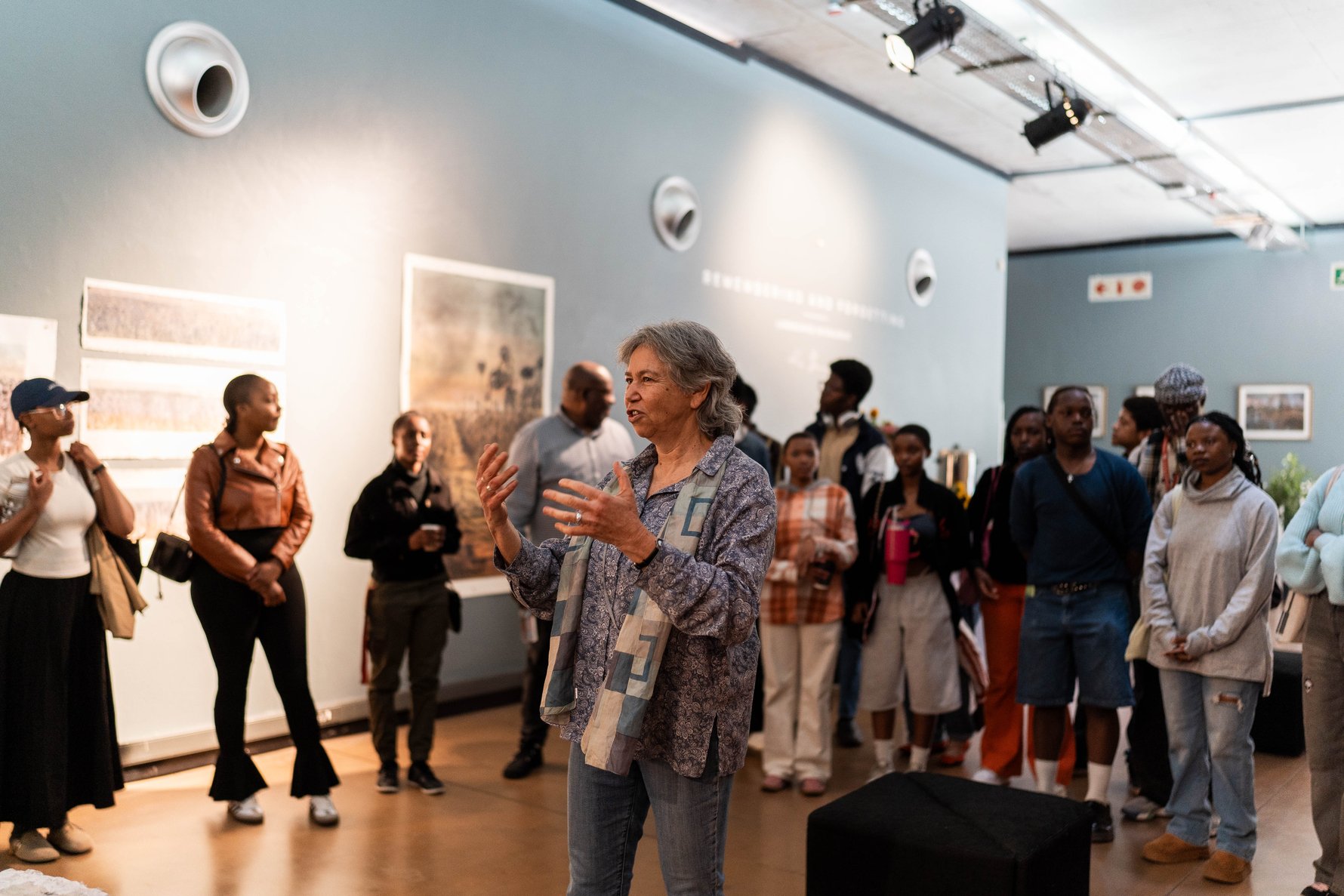
When you reflect on your more than 30-year career in the arts as a maker, educator, and collaborator, what shines most brightly?
My teaching and activism. It’s an enormous privilege to be part of shaping the futures of new careers. Equipping students and emerging artists with the confidence, skills, and imagination to believe that they can reach for their dreams. I have pulled students into collaborating with me on very many projects, whether homestays in remote corners of South Africa, murals and collaborative partnering, Paper Prayers and AIDS advocacy programmes, or Phumani Paper – training of hundreds of rural women and setting up papermaking and craft projects across the country. I always believed that the most meaningful learning happens outside the classroom, and that students learning about resilience from community members is life-changing. However, another highlight in my career is always the inspiring opportunity to collaborate with the genius of William Kentridge. We have been able to co-publish many editions with him that have kept the wheels turning for APS for the past two decades.
"Joburgers are resilient, creative, and tough – and find ways to outwit and survive." – Kim Berman
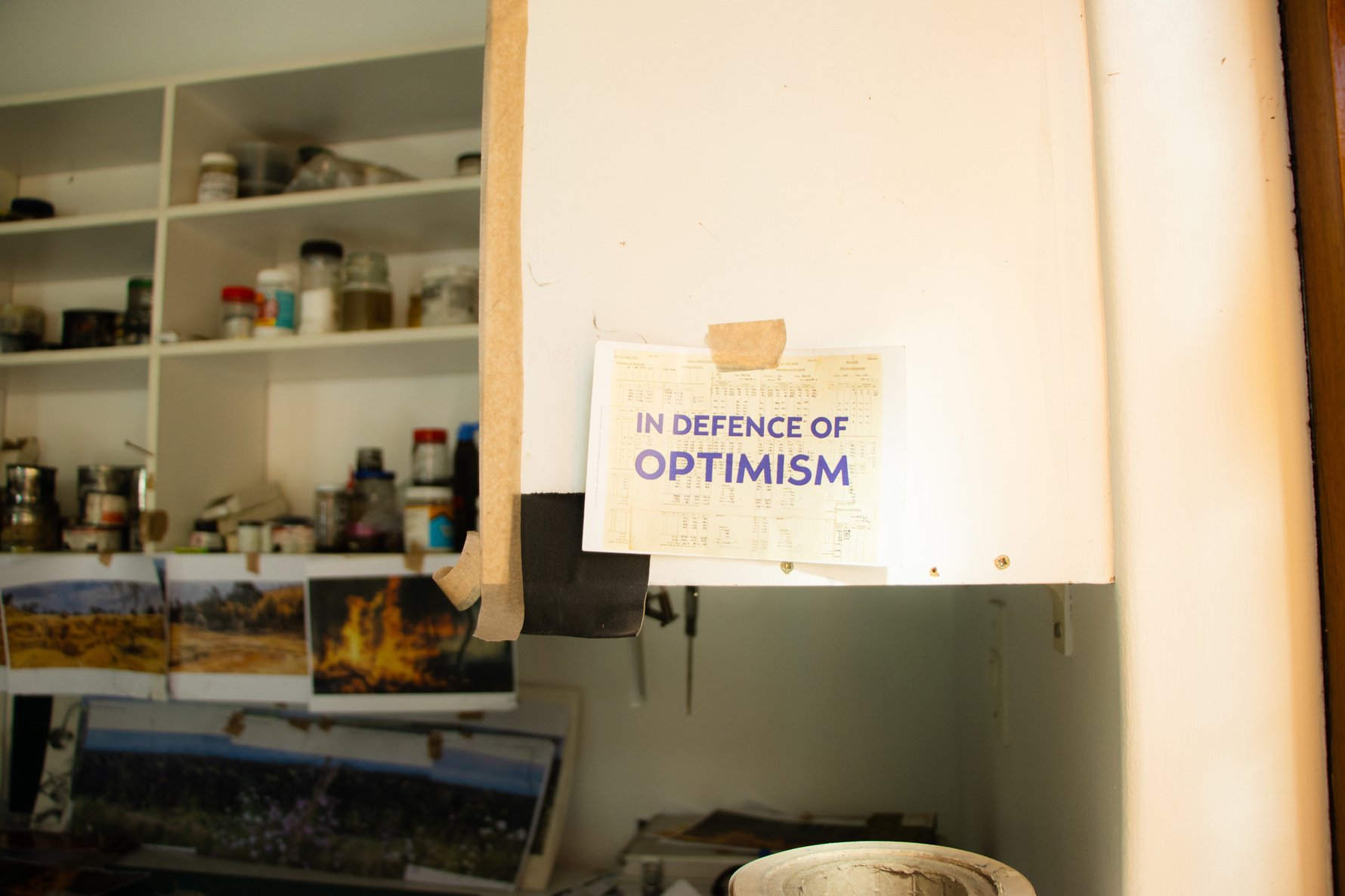
To us, you are quintessentially Joburg. Tell us about your relationship with this city.
I love Joburg! Potholes and all! While I hate the corruption and evil that prompts opportunists to damage the flourishing of the city and deprive citizens of basic needs and services in every sector, Joburgers are resilient, creative, and tough – and find ways to outwit and survive.
For 30 years, APS was in Newtown, once a thriving cultural hub where arts organisations bounced off the energy and collaborations around us, whether it was Imbali, Moving into Dance, the Baseline, or the Market Theatre Photo Workshop and Theatre Labs. The creative energy was electric. I loved that! Now, situated in the leafy green suburb of Houghton is a very different energy. Our clients and corporate partners feel safer and seem to be able to spend money more easily, which is critical to our sustainability. Our students are thriving, but it is a temporary location, and we are looking for our own more permanent home.
At the opening you said that you don’t do things alone – and we love your community spirit. Why is this so integral to who you are and how you wish to exist in the world?
I don’t do much alone, except make my own artwork. Peers and colleagues are very surprised to see this body of work, which has been hidden for many years. Printmaking has taught me to be a good collaborator. I love the word co-creator, even if it’s been commodified. Sharing agency of ideas that take root and spark inspiration and opportunity is so much more meaningful. Doing things together shares the ownership and ensures communal investment. I believe collaborative partnerships is how APS has survived and grown. We have also developed a strong art and social justice ethos in our Department of Visual Art at UJ, expanding to a new offering of Art Therapy as a first for South Africa.
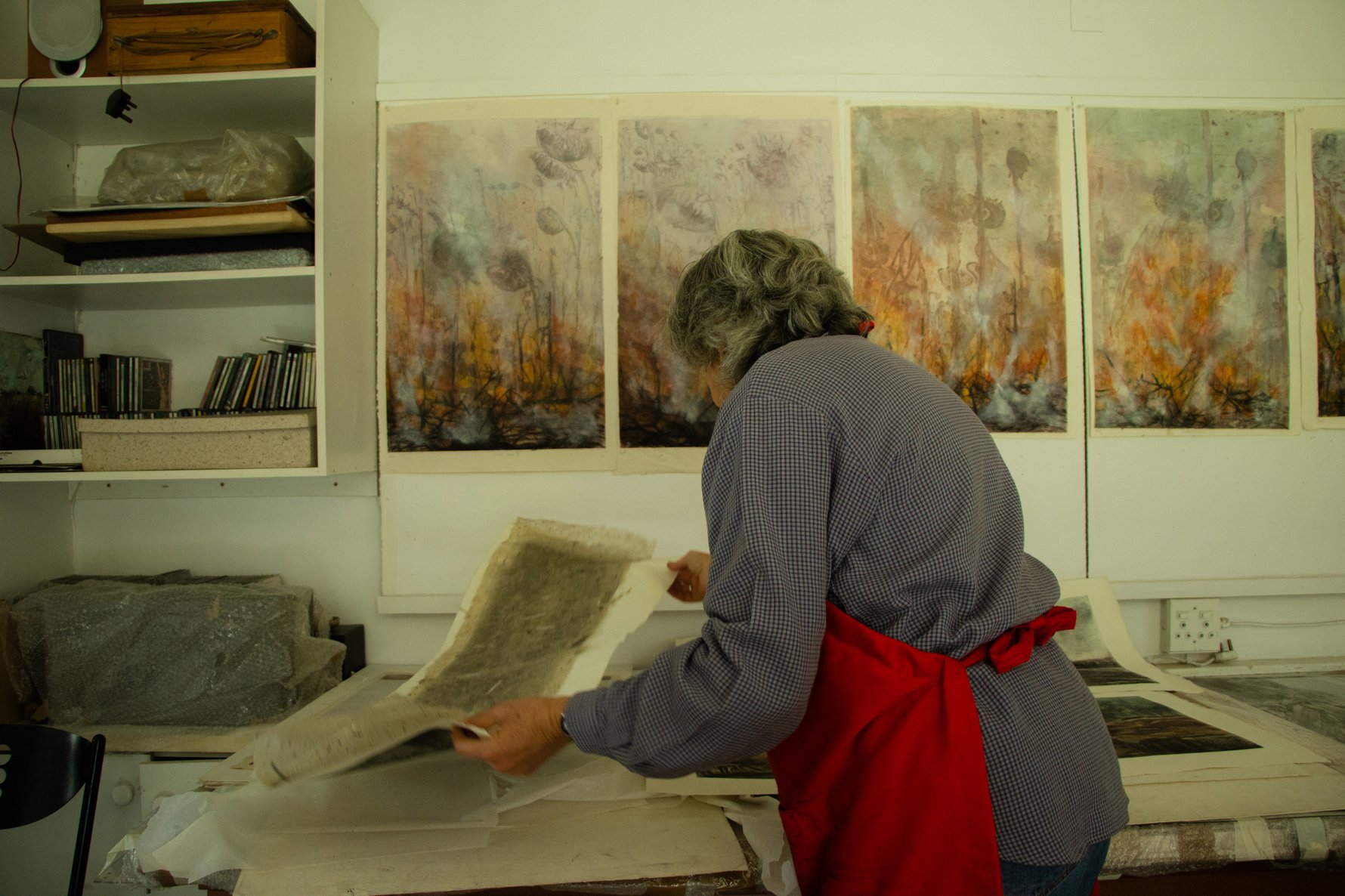
How have you balanced your teaching endeavours with your own artmaking over the years?
Well, the fact that I have not made much work or shown work over the last decade and a half, shows that I have not kept a good balance. I may have lost my nerve in my own practice and found more fulfilment in collaborating with remarkable artists and students. Being a printer and educator often requires you to set aside your own ego or voice, to allow your collaborator's voice to emerge authentically. Maybe this personal creative lull and the boost this exhibition has given me will support my confidence to continue as a practicing artist.
Remembering and Forgetting marks the end of your teaching career (at least in a formal capacity) and no doubt heralds new beginnings. Tell us about this next chapter.
I am really looking forward to it. I am handing over my role at UJ to some remarkable new colleagues who will bring a focused African-centred direction to how and what we teach. APS is embarking on a new strategy with new leadership to consolidate its long-term sustainability. That feels incredibly satisfying and timely. It’s time to step aside as my role has cast shade that needs to make room for the sunlight to shine on the next generation of leaders.
What are you planning to make of your newfound freedom?
I am looking forward to having more time. More time to do so many things I never get to as I am racing around to meet a multitude of commitments in my schedule. I will be working with our team on a book of the legacy of Artist Proof Studio that will include the many stories of our alumni, accompanied by 35-year anniversary exhibitions. I will make more artwork in my studio, read more books, go on many road trips around South Africa with my partner Robyn, spend more time with friends and family, and take more time to breathe.
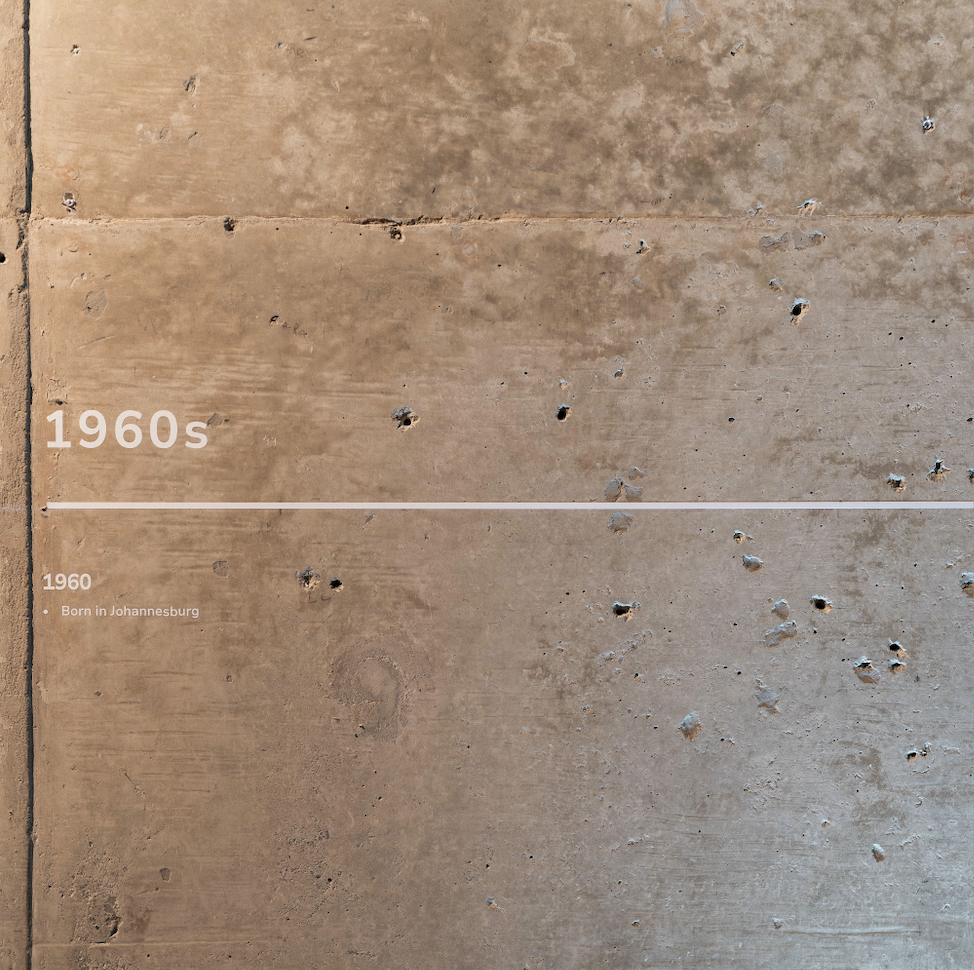
Rapid-fire round: 5 questions about Joburg
What brought you to Joburg and what makes you stay?Born, bred, and here to stay. I love Joburg. As infuriating as the negligence of keeping our city well-groomed is, it’s a catalyst for remarkable brilliance.
What is a surprising thing people might learn about Joburg by having a conversation with you?
It’s given birth to some of the world’s greatest artists, dancers, musicians, and performers. It is a great place to be a dreamer; to reach for and live your dream.
If you were Joburg's mayor for one day (average tenure), what would you change?
I would ensure every primary school is resourced with the ability to offer children creative arts. I would invite every city manager, counsellor, and team leader to a Paper Prayers artmaking workshop where we would spend the day dreaming, envisioning, and visualising a better future for our city; and embody the link between creative imagination and the agency to act.
What makes someone a Joburger?
Tuning into and connecting with the heartbeat and energy of this infuriating and challenging piece of inhospitable land. Falling in love with the Joburg landscapes by William Kentridge.
Three words that describe this city.
It’s a paradox in that it holds exhilarating possibilities of hope and despair simultaneously. That’s not three words… It’s like an aloe: thorny, resilient, transformative.
Remembering and Forgetting: Landscapes in Dialogue runs at the UJ Art Gallery until Fri, Sep 12, 2025. RSVP here to join her for a final walkabout at 12:30 on Fri, Sep 5, 2025.


 (1)_m.jpg)
_m.jpg)
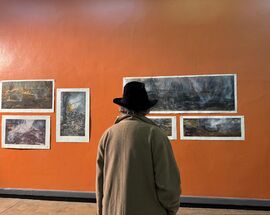


Comments